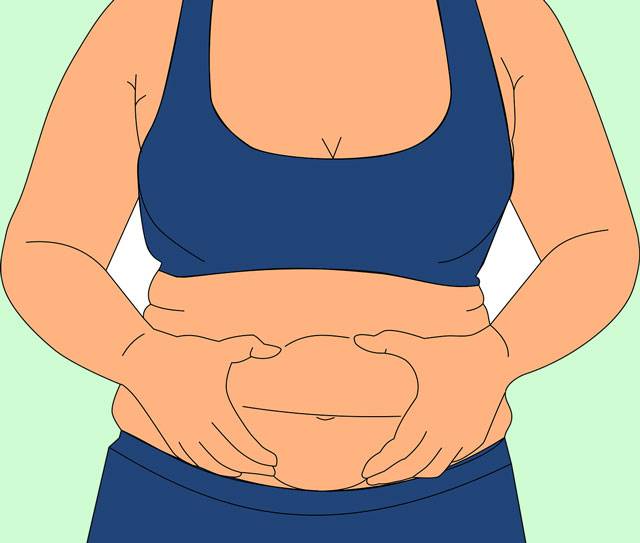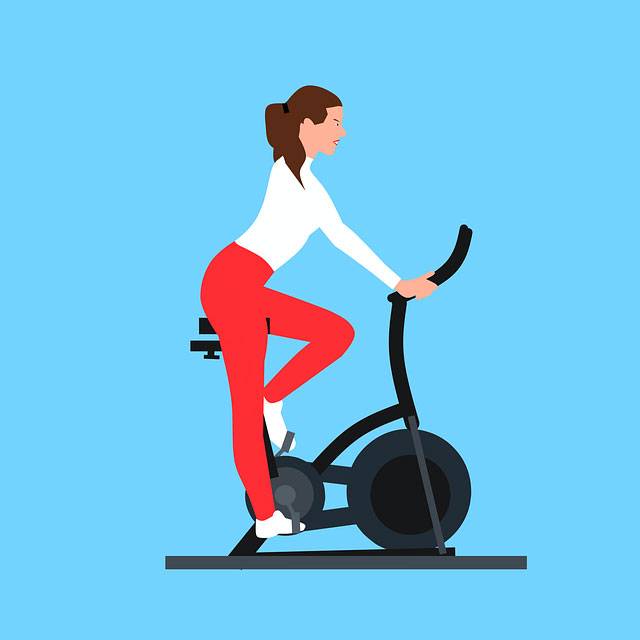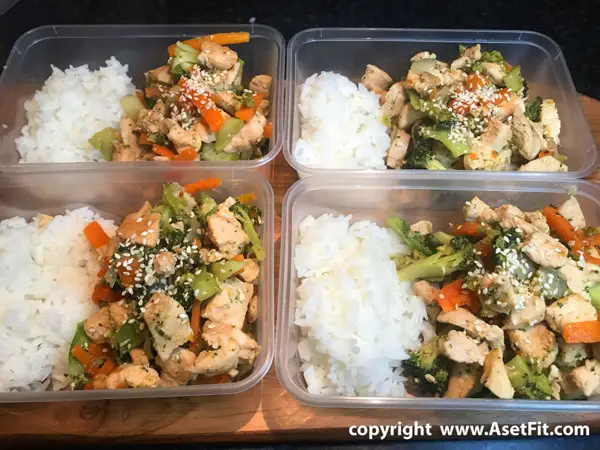
So, here is our step-by-step “How to Meal Prep for Beginners Guide”, with plenty of tips, information, and examples on meal prep recipes.
This article will answer a lot of questions and also give you actionable meal prep ideas.
What Is Meal Prep?
Meal prep or meal preparation is preparing the meals ahead of time. Meal prep can also be called meal prepping.
It could be just slicing up some fresh vegetables and placing them in a bag, ready for future cooking.

Or you might prepare and cook several meals at once and place them in containers in the fridge or freezer. The meals are ready to have during the week.
You can divide and portion up the meals from one recipe pot to meal prep. Or you can cook several different types of meals and flavors in the preparation.
Meal prep can also mean organizing not only your main meals but also it could be snacks, drinks like smoothies, and desserts.
What Are The Benefits Of Meal Prepping?
Some of the positives of meal prep include:
- Saving time.
- Convenience.
- Eating healthier.
- Saving money.
- Save on wasted excess food.
Let’s go over the benefits with some examples.
- Saving time
When you slice up some ingredients for dinner, you have to get the ingredients out, a knife, chopping board, pots, etc. Then wash all the pots and utensils and tidy up.
By doing a meal prep run, you are getting all the cooking items out and preparing or cooking several meals in one hit. So essentially you are saving a lot of time.
Instead of putting the oven on for one meal and taking one hour, you can cook several meals at once saving time again.
If you prepare the meals for the rest of the week in one batch, you don’t have to prepare all the food, every day for the rest of the week.
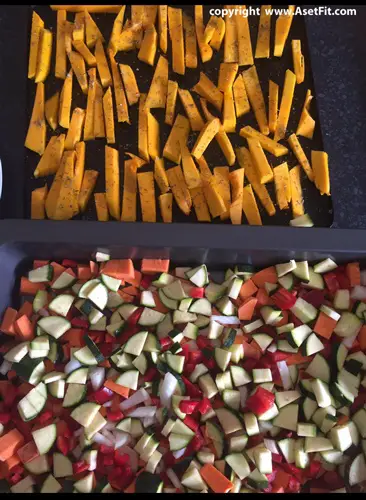
- Convenience
When you get home from a hard day’s work, it is good to know that you only just have to heat the meal. (Or if the ingredients are uncooked, but they are chopped up and ready to go, it still saves time.)
If your plans change, it is good to know that you can pull some meals out of the fridge and warm them up.
Food prep is also great for feeding large groups of people. If unexpected friends or family come over for dinner, you have some tasty meals already organized.
As well as convenience, preparing food for future meals gives you choices. If you have a few different recipes cooked in the freezer, you can choose what type of meal you want to eat.
An example might be, you have curry beef stew and honey soy stir fry pre-cooked to choose from.
- Eating healthier
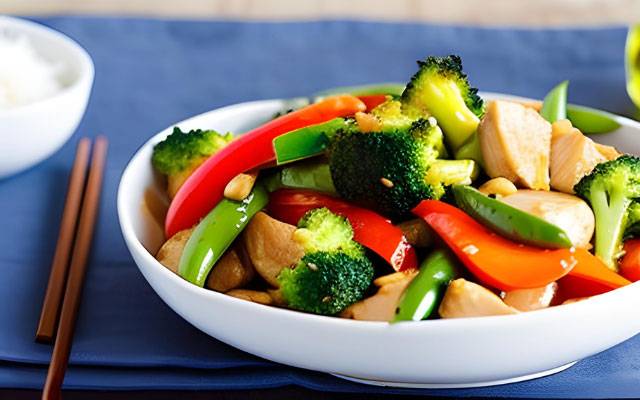
As you have meals already cooked at home, you are less likely to call in and get junk food or unhealthy takeaway on the way home from work.
You also control what you put in your recipes, like you can include extra vegetables and whole grains. Or use quality ingredients like olive oil, local fresh produce, etc.
By preparing the food, you can design the meal to suit your nutrition needs.
You can minimize excess saturated fats, added sugars, and salt.
You can work the meals in if you count calories or you are on a certain diet or weight loss program. (With a lot of takeaway foods, you may not know the total calories or macro breakdown of the food.)
For athletes, bodybuilders, fitness guys, and gals that need a certain level of macronutrients, like high protein or minimal fat, you can design the meals to suit.
- Saving money
Another big benefit of meal prep is saving money.
For those who like eating out a lot of the time at restaurants, or having take-away food, this can get very expensive.
Buying fresh ingredients and cutting them up can also save you a lot of dollars.

Buying in bulk you can also save even more money with meal prep.
Packaged food with wrappers, plastic containers, and boxes costs a lot for food manufacturers to provide, so buying fresh ingredients also saves money on types of food and ingredients. (It also saves a lot of individual wasted packaging and is better for the environment.)
With some planning, it is amazing how cheap you can design a meal prep course.
- Save on wasting food
It stops you from buying food you may never eat and waste.
Planning and preparing gets you more focused on the meals you need. You are less likely to go to the grocery store and buy produce that you forget about in the bottom of the fridge and it goes moldy. (And saves money again.)
The five major reasons are what makes meal prep so popular for people all over the world.
What is The Difference between Meal Prep and Meal Planning?
Meal planning is just deciding what meals you are going to eat throughout the week.
You might list the meals down in a calendar, food planning app or just make a mental note.
Meal prep is the act of physically preparing the meals. It could be slicing up the ingredients, all the way to cooking the meals and portioning them up into containers or bags.
Ideally, you want to plan, shop and then prep.
Another way to put it is that organizing and scheduling what you are going to have is the planning stage.
Chopping up the ingredients and produce, then cooking it, is the meal prep phase.
How to Meal Prep for Beginners
- Plan first to help you with what you are going to prepare and cook for the week ahead.
- Choose meals that you and your family like.
- Look in the pantry and fridge to see what ingredients and produce you have already.
- Write down what ingredients you will need to buy to make the meals.
- Shop from the list.
- Start off slowly and only prep an extra meal or two. Just start doing normal cooking, but prepare enough for additional meals.
If you are used to buying a certain amount of vegetables or meat, just double or triple the amount, for two or three extra meals.
Focus on one type of meal first like either lunch or dinner.
If you try and cook seven different recipes for lunches and dinners, with four different meats and exotic vegetables, it can be hard to manage.
Start with a few basic meals you know and gather more ingredients.
- Once you have some meals you like, you can then do more volume and have confidence that the family will enjoy them.
- Once cooked, place the portions into containers.
- Label the meals and place them in the fridge or freezer.
Here is a basic recipe below used in meal prep that will do three meals to four meals, depending on your appetite.
It is just one example of a recipe and how to meal prep for beginners.

Recipe: Stir Fry Honey Hoisin Chicken.
Ingredients:
Chicken breast x 3
Broccoli
Carrots x 2
Onion x 1
Rice 1 cup.
Honey 1 tablespoon.
Hoisin Sauce 1 tablespoon.
Optional: sesame seeds and chili flakes.
(If you like more flavor, use 1 tablespoon of sweet chill sauce. Or add some soy sauce.)
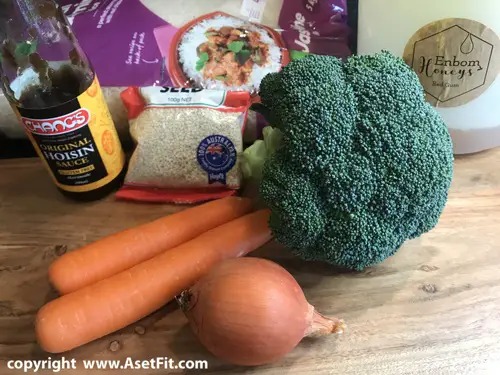
Instructions:
- Dice the chicken up.
- Chop the vegetables up on a separate chopping board.
- Boil the rice.
(Alternatively, microwave the rice. Use two cups of warm water to one cup of rice. Heat for seven minutes, then stir. Heat for another seven minutes. Depending on your microwave, you might have to cook the rice for another 1 to 3 minutes.)
- While the rice is cooking, place the chicken and vegetables in a wok or non-stick fry pan. (Ideally, you shouldn’t have to add any oil. Sometimes a touch of water can help.)
- Stir the vegetables and chicken intermittently and cook until golden brown.
- Once you have the chicken and veggies cooked, add the honey and Hoisin sauce. Cook for an additional couple of minutes, heating up and working the sauce through the meal.
- Place and portion up the meals in plastic re-useable containers, Tupperware-type containers, or dedicated meal prep containers.
- Add the rice into the containers with the chicken and vegetables.
- Optional: Sprinkle on sesame seeds. Or if you like it spicy, add chili flakes on top.
- Label and putting a date on the meals helps you know what the food and how long ago you prepared it.

If you end up getting four meals from the batch, you might eat one meal, place two prep meals in the fridge, and one meal in the freezer for a later date.
Where to Buy Meal Prep Containers?
Meal prepping is very popular, so a lot of places like online stores like Amazon, or eBay are good places to get a bargain for the containers.
Retail shops like Kmart, Walmart, and the superstores are worth checking out.
You can buy reusable cheap plastic containers that are microwave-proof for a start. When you release the advantages of preparing the food ahead of time you can buy quality containers later on.
Old ice-cream plastic containers, aluminum foil trays, or heavy-duty snap lock bags can also work for some meal prep containers.
(Although if you want to store the meals neatly, dedicated meal prep containers are worth the investment.)
What Types Of Meal Prepping Are There?
This can be as simple as you like, or be as involved as you want.
Meal preps can range from basically just preparing some vegetables and meats ready for two meals at one end of the spectrum.
At the other end of the spectrum, is preparing and cooking all the main meals and snacks, and desserts for seven days. Or even up to a couple of weeks’ worth of meals.
Here we have a list of the different types of meal preps.
- You can just chop up fresh vegetables and meats for two meals. (Not cooking them, but preparing them.)
- Just preparing and cooking a couple of days’ worth of meals.
- Preparing and cooking five dinner meals.
- Prepping and cooking seven days’ worth of breakfast, lunch, and dinner meals at once.
- Organizing not only main meals but also prep snacks as well.
- You might not have any meals planned for the week as such, but you just dice up meats and vegetables for future meals. You might freeze some bags and they are ready to put in a stir fry or slow cooker when you want.
- Slicing up fruits, and preparing just for smoothies or fruit platters and snacks for the kids.
- You can place grains like oats into meal-size portions in a bag. Add cinnamon powder or protein powder into the oats bag, ready for a quick breakfast.
As you can see you variety of types of meal prep can range from very basic to preparing and cooking all the meals for the week.
Who Should Meal Prep?
Busy moms and dads.
Students who meal prep can save money and time with some planning.
Not only is preparing future meals handy for the busy family, but are great for fitness enthusiasts and people who want to eat healthy.
Mel prep works well for people who are on a budget and want to save some money.
Meal prepping can also be handy for people camping, RV owners, and backpackers before they head out.
On-the-road salesman and shift workers can really benefit from the meal prep convenience, time saving, and healthy eating aspect.
Mel prep is ideal to help lose weight. Also for athletes, football players, and bodybuilders to gain muscle weight.
When Do You Meal Prep?
Sundays are normally a good time for most people to prepare for the start of the new week.
The Sunday might coincide with planning the meals first thing, then shopping and meal prep time.
Wednesday, halfway through the week is another popular day.
If you don’t like freezing meals and like fresher meals, then you might meal prep twice a week. Such as Sunday and Wednesday.
Overall though the best time to do it is when you plan beforehand, shop and you know what ingredients and quantities you have to start.
Some people prep at a certain time. So when the batch is cooked, they can eat one meal from the batch for lunch or dinner.
How Long Does Meal Prep Take?

It can range just from five minutes, slicing up a few vegetables and meats to prepare them for a couple of meals.
Or it can take two or more hours to prepare if you include cooking time.
If you include planning, shopping, and preparation for seven breakfasts, lunches, and dinners, then it could take three hours or more.
Slow cookers, doing big batches of stir-fries or three recipes in the oven at once, can help free up time.
What To Meal Plan For The Week
- Write a list of what foods you and your family like to have. Foods you like eating, are going to be consumed first and not left in the freezer for months.
- After you have listed down your favorite meals, work out what meals are good for preparing in advance.
- For some people you might plan to have a hearty (more calories) meal one day of the week, the next day a healthier option or a lighter meal. (Fewer calories.)
- Have a variety of protein sources, whole grains, legumes, and vegetables.
- Include some healthy fats like olive oil, fish, nuts, and avocado.
Here is an example in the table below of mixing up the meals for dinner. This not only helps with the protein, but also the micronutrients like different vitamins and minerals.
| Monday | Tuesday | Wednesday | Thursday | Friday | Saturday | Sunday |
| Chicken Stir fry & rice | Beef Casserole | Tuna and salad | Beef Casserole with rice | Salmon & asparagus | Treat day | Chicken Wrap |
The good thing about meal prep is you don’t have to cook six or seven individual different meals.
For the above meals you only have to cook the ground beef and chicken. (The salmon and tuna are tinned. But you could easily cook fresh salmon on Sunday and have it that day if it is your meal prep day.)
The vegetables diced up once, can work into the chicken stir fry, salmon and asparagus, and the casserole dishes.
The salad chopped up can work for the tuna and salad on Wednesday and Chicken wrap on Sunday. (It can also be worked in for lunches, like salad sandwiches.)
One lot of rice is cooked and can be used for a few different meals.
The above is just an example and you can mix and match protein sources, veggies, and carbs in your planning days and week.
Remember to add dairy items like milk, cheese, and yogurts when planning meals, desserts, and snacks.
Fitness apps and meal apps can help with the planning.
What Foods Are Good for Meal Preparation?
Here are some ideas for food and ingredients that you might prep with.
The sky is the limit and generally, most produce, ingredients, and food will be suitable.
Protein: Chicken, fish, beef, lamb, tuna, venison, game meats, alligator, turkey, ground turkey, ground beef, pork, goat, and eggs.
Carbohydrates: Rice, brown rice, noodles, ramen noodles, pasta, couscous, legumes, lentils, quinoa.
Vegetables: Cauliflower, bell peppers (capsicum), broccoli, spring onion, onions, beans, peas, snow peas, potatoes, sweet potatoes, mushrooms, kale, spinach, squash/pumpkin, tomatoes, corn, bok choy, cabbage.
(I should include Brussels sprouts in the list, but …yuk! Sorry, I am not a fan.)
For bodybuilders or people who want more protein in their diet, you can get protein powder suitable for cooking and baking that you can add. (Not every brand is suitable for cooking.)
What is The Easiest Way to Meal Prep?
Here is an easy and simple way to meal prep.
In this recipe, you don’t have to be really fussy and measure out too many ingredients. If you want more veggies, then just add more.
The amount of meals you get from this recipe will depend on your portion size, pot size, and ingredients on hand.
It is just a simple guide or example recipe. I like to call this recipe the “Rough and easy beef casserole stew.”
The preparation for this recipe is very quick to do, but it does take a bit of time to cook. However, you can do some other things while it is in the oven. (Or use a slow cooker-type pot.)
Meal Prep Recipe 2. Rough & Easy Beef Casserole.
Ingredients:
Bag frozen mixed vegetables.
Ground beef.
Rice. 1 cup.
Jar of pasta tomato sauce.
Curry powder 1 teaspoon.
Pepper.
Preparation:
- Turn the oven on to medium to high setting.
- Place the veggies, ground beef and rice into a casserole dish.
- Add the curry powder and a pinch of pepper.
- Pour the tomato pasta sauce over the ingredients.
- The rice will need some moisture to cook. Pour some water over to cover the rice and ingredients. (Be careful you don’t pour too much water or you can dilute the taste.)
- You can stir it around the hour mark and see if the rice has enough liquid.
- Cook for one and a half hours, to two hours.
- Dish up into individual meal prep containers.
- Label and place in refrigerator or freezer.
If you want more flavor add something like: chicken stock, tomato ketchup, Worcestershire sauce, BBQ sauce, soy sauce, or hot sauce.
Red wine is also excellent in this recipe.
(If the children are playing up, it is recommended to put about a quarter of the red wine into the casserole and drink the rest.)
You can substitute the tomato pasta sauce for this recipe with real tomatoes.
(I just recently used a big load of cherry tomatoes from my daughter’s veggie garden for this recipe.)
Asian and Indian flavors like chili, and green curry and recipes like Korma and Massaman curry also work well with this type of easy meal.
Ground beef goes well with meal prepping. (Although it contains more fat, for the budget meal prep person it is good value and easy to work with.)
Ground chicken or turkey mince can be a healthier choice.
Substitute the rice for potatoes or sweet potatoes if you choose.
To cook a bigger batch. Leave out the rice from the casserole dish (It expands.) and cook it separately.
For health benefits, the variety of vegetables is great. But for easy meals, you don’t want to chop up twenty veggies. Keep it healthy, but simple. Stick with three or four types of vegetables. That is where frozen pre-chopped bags of veggies are great.
If you want extra vegetables, add ingredients like peas, corn, cauliflower, and carrot, if they are not in the frozen veggie bag.
Soups are another easy and quick meal prep idea to try.
Hot pots, casseroles, stews, or whatever you want to call them, are ideal for cooking large volumes of meals in one session.
How to Meal Prep Smoothies
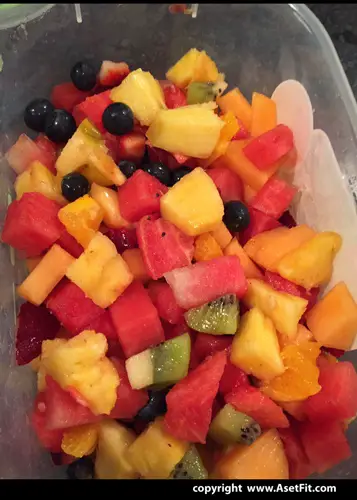
Smoothies are great and easy to meal prep for.
You can do any smoothie recipe, but a popular way how to meal prep smoothies is:
- Slice some apples, oranges, and bananas into quarters.
- Cut enough pieces up to make a few smoothies.
- Select a few pieces of each fruit and place them in the blender.
- You can change the taste by changing the ratios of different fruits.
- Place the other unused pieces into a snap lock bag. Place in the freezer or fridge for other smoothie drinks.
- Add a handful of mixed berries. (Frozen berries work well.)
- Optional – Place some ice or chilled water into the blender.
- Mix up in a blender.
Here are some meal prep smoothie tips:
Frozen bags of berries are ideal to have to add flavor to smoothies. (Especially if you have green-type smoothies. As they add a nicer taste and have lots of antioxidants.)
If you use half of a banana for breakfast, such as sliced up in porridge, place the other half in cling wrap and place in the freezer. After a while, you have a collection of fruit pieces prepared, ready for smoothies.
You can freeze salad mix and spinach. This is great for tearing off a portion of frozen greens and using it for a healthy base.
You can use a base of store-bought orange juice or pineapple juice as a base. Try to purchase more natural ones with the pulp. Not the O.J. ones loaded with added sugar.
For losing weight or healthier eating, remember that fruit smoothies can have a lot of calories, especially if you use a base of store-bought orange juice. Try to mix some greens in there. Just use about a third or less of fruit for flavor and the rest with vegetables.
Substitute the fruit for ice. If you place the cut-up fruit pieces into the freezer, you may not need ice cubes to make a chilled smoothie.
Pineapple, banana, apple, Kiwi fruit, strawberries, grapes, pears, watermelon and mango go well.
Milk, coconut milk, soy milk, almond milk, etc., can make a base for a creamier smoothie.
Protein powder like a vanilla flavor can add extra protein to a smoothie. (I love putting half a scoop of vanilla protein powder or banana flavor to give some extra flavor.)
Carrot and tomato can work with some veggie smoothies.
Lime and lemon juice can give the smoothie some zest.
Ginger, nutmeg, cinnamon powder, psyllium husk, linseed, chia seeds, turmeric, and protein powder can add different textures, tastes, and properties.
How to Meal Prep for Weight Loss
- Calories are king for weight loss, or gaining weight.
If you eat more calories than your body needs, then you will put on weight.
If you eat fewer calories or burn more than your body needs, you will lose weight.
- So planning is one of the keys for controlling how many calories you consume.
That is why meal prep is so effective for weight loss. As you can plan the type of meals you want, and then prepare them.
You can control the portion size and type of ingredients that go into the meal. (Total calories.)
The wrong way to meal prep:
As an example, if you prep massive portioned meals, cooked in excess oil and cover it with butter and cream, you are probably going to put on weight if you eat this several times a week. (Depending on how many calories your body uses.)
The correct way to meal prep:
On the other hand, if you meal prep meals for the week with correct size portions and overall fewer calories than your body uses, you will lose weight.
You can have one or two higher calorie meals (Treat meals. This could be the meals you don’t prep.) But overall you need to control the calories going in. Either on a daily or a total weekly basis.
- Why you definitely don’t have to count calories in meal prep for weight loss, it is a good idea to know what type of meals you are preparing. Are they high-calorie meals or meals that can work with your calorie balance needs?
- Search for some low-calorie meals, test-cook it, and see how it tastes for you. (Don’t cook a heap of batches at this stage until you have tasted it.)
- Once you have found some tasty low-calorie recipes for say, as an example dinner meals, start preparing and cooking batches.
- Repeat the searching and taste testing for some lunches and breakfasts.
This doesn’t have to be done all in a few days. Work it in to suit your time frame.
Look for some snacks and treats you can prep as well.
- After you have tested several healthier recipes and cooked batches for meals, you should truly know how to meal prep for weight loss.
This can take a little bit of time. But you are more likely to work this into your lifestyle and habits and you are learning about ingredients, recipes, macro nutrients, and calories.
You are in control of what you put in your mouth. Not relying on the latest fad diet.
- Add good planning and your meal prep knowledge with some exercise and you will see results and lose weight.
Meal prep weight loss tips
Use a non-stick wok or fry pan, so you use less oil in cooking. (Fewer calories.)
Soups are good easy meals to meal prep and most recipes have minimal calories.
Bulk up the meals with more veggies and whole grains.
Food scales are valuable to have.
Protein is good for filling you up.
Don’t be afraid to try game meats like venison, bison, rabbit, wild duck, etc., as they have good protein sources with minimal fat. (Depending on the cut.)
Work in fish a few times a week in the planning. Don’t deep fry it in oil, but grill it or bake the fish.
Tinned tuna and canned salmon are great ways to work in fish in the meals. Either with salads or hot meals.
Avoid bulletproof coffees as they are loaded with excess calories.
Use low-fat or no-fat dressings for salad.
Potatoes are filling and healthy, despite what people say about carbs and potatoes. (It is the high-calorie sauces, cooking methods, and toppings that have given the humble potato a bad name.)
For more information, visit – 19 Reasons Why Diets Fail: What To Look Out For
Be mindful not only of what you eat but also the calories you drink.
Meal prepping works well with most diets and healthy eating lifestyles. It works with the 5:2 diet, intermittent fasting, etc.
What Are The Negatives Of Meal Prep?
It can get tiresome eating if you prepare the same exact meals all the time.
Just having rice, chicken, and broccoli all the time can get bland and boring.
Lacking a variety of macronutrients and micronutrients is one drawback if the meals aren’t varied.
A lot of registered dieticians and nutritionists advise on not eating the same exact thing over and over. As you lack a variety of vitamins and minerals that your body needs.
Another negative of meal prep is you might have limited room in your fridge or freezer to store the food.
One tip is to use proper meal prep containers so they stack on each other neatly and take up minimal room.
It does take a bit of time initially. (However the more you do it, the quicker it gets.)
You might buy too much of one ingredient. (This comes down to planning and starting off slowly at first.)
To avoid the drawbacks of a plain-tasting meal, plan with an assorted variety of vegetables, meats, and flavors.
It can be complicated. Start prepping just two or three meals at first. Then you can work your way to five dinners and lunches.
Depending on how enthusiastic you are, if it suits you might then plan to do several breakfasts, lunches, and dinners in one preparation.
You can get too carried away and end up being overwhelmed if you cook too many meals or too many different types of flavored meals at once.
Using too many ingredients, expensive and exotic ingredients can turn into a nightmare. Try and keep it simple until you get experienced with meal prep.
Some ingredients like fish, shellfish, etc., need to be used within so many days. So some ingredients can be tricky to work with if you want them fresh for a few days.
Meal prep does require good food safety and food hygiene standards.
Meal Prep Tips
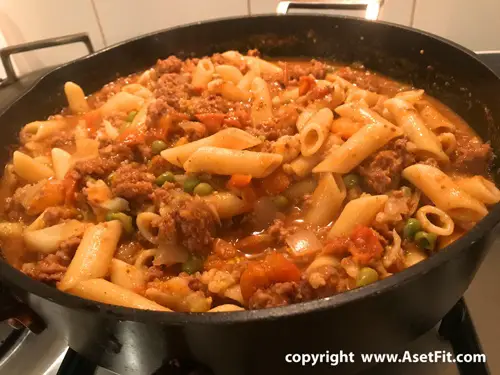
Get the family involved in the planning.
One person in the family might have a special meal that they request on one day of the week. If it works in the plan, this keeps everyone in the family happy with the meals. (Well at least for one day.)
If you are short of time, meal prep services are worth looking into. There is a huge variety of companies that offer different services.
Some just provide the fresh produce in portion sizes and you have to add the ingredients together and cook it.
Some companies focus on budget meals, others on convenient and tasty meals.
Other services can even cater to healthy meals, athletes, and bodybuilders by providing you with weighed-out portions and information on macronutrient amounts.
Frozen bags of mixed vegetables are handy to have for backup ingredients for meal prepping.
Spices and herbs, like garlic, ginger, curry powder, and chili are always good to have in stock in the pantry.
Chicken stock, veggie, and beef stock are great for soups or a base for stews and slow cooker meals.
Shop around for bulk buys on meats, like chicken, fish, and beef. You can a lot of times get a whole rump of meat unsliced for cheaper, than if it was sliced.
Bulk bags of rice can also be purchased a lot cheaper than smaller bags.
Try growing some vegetables in the garden.
Growing some fresh ingredients like herbs, tomatoes, and beans, doesn’t mean you have to have a huge area for the veggie garden. You can grow some veggies in pots or a small veggie garden patch.
Plan first with a list, before you go to the supermarket. Otherwise, you might come home with one or two minor ingredients, but forget the main ingredients you went shopping for.
(From experience, try and don’t take the children with you shopping if you have a choice. Otherwise, you seem to get home with minimal healthy ingredients and a trolley full of junk food.)
Meal prep soups are an easy, cheap, and warming meal to have on standby bye when you don’t want a big meal.
Avoid adding salt to most meal prep recipes. If you use a stock base or any sauces, they normally have enough salt in them. If a person wants to add more flavor they can add table salt or a condiment like tomato ketchup if they chose.
Pepper and other spices are great for making the meals tastier and healthier.
Food scissors are great for dicing up things like chicken breasts, etc.
If trying new recipes, test one or two meals first. (You might cook the vegetables, grains, and meats, but only put sauces or flavorings for one of the meals. That way if you don’t like the taste, you have one untouched base to add a better flavor or spice to.)
Otherwise, if you haven’t tried the recipe or ingredients before, you might find instead of one meal that no one in the family likes, you have seven meals cooked already that no one likes.
Snaplock reusable bags are very useful for marinades, chopped-up fruit, and vegetables for the fridge and freezer.
FAQs
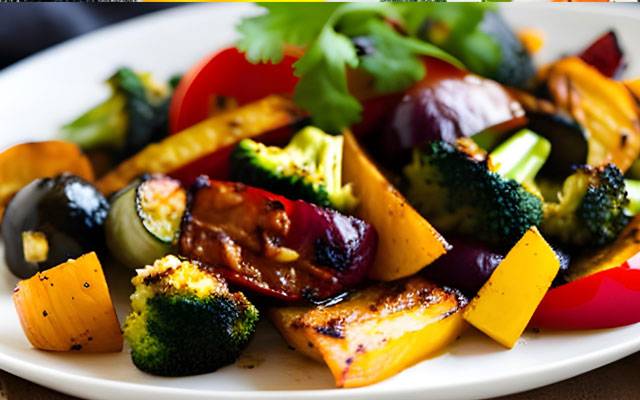
Here are some frequently asked questions (FAQs) about meal prep:
How do I get started with meal prep?
Start by planning your meals, creating a grocery list, setting aside a dedicated day and time for cooking, and investing in meal prep containers.
What equipment do I need for meal prep?
Basic equipment includes storage containers, cutting boards, knives, pots, pans, and kitchen appliances like a slow cooker or Instant Pot.
How long do meal-prepped meals last in the fridge?
Most meal-prepped meals can last in the fridge for 3-5 days. You can also freeze some meals for longer storage.
What foods are best for meal prep?
Foods that are easy to prepare in bulk and store well, such as grains (rice, quinoa), proteins (chicken, tofu), vegetables (broccoli, carrots), and legumes (beans, lentils).
Can I meal prep for a specific diet, like keto or vegan?
Yes, you can tailor your meal prep to any diet by choosing appropriate ingredients and recipes that align with your dietary preferences.
How do I prevent my meal-prepped food from getting soggy or losing flavor?
Keep wet and dry ingredients separate until you’re ready to eat. Use sauce cups or dressing containers to add sauces and condiments just before eating.
Do I need to eat the same meal every day when I meal prep?
No, you can prepare a variety of meals for the week to avoid monotony. Many people prep a few different dishes and alternate them throughout the week.
Is meal prep suitable for single individuals or smaller households?
Absolutely! Meal prep can be adapted to any household size. You can adjust portion sizes and the number of meals you prep to suit your needs.
How can I prevent my meal-prepped food from becoming boring over time?
Rotate recipes and ingredients regularly to keep your meals interesting. Try new recipes and experiment with different seasonings and spices.
Can I meal prep on a tight budget?
Yes, meal prep can be cost-effective. Plan meals around affordable ingredients, buy items in bulk, and reduce food waste by using ingredients in multiple recipes.
Is meal prep suitable for weight loss or fitness goals?
Yes, meal prep can help you control portion sizes and make healthier food choices, making it beneficial for weight loss or fitness goals.
Are there any safety concerns with meal prep?
Yes, it’s important to follow food safety guidelines. Store food at the right temperature, avoid cross-contamination and reheat leftovers properly.
How can I make meal prep more enjoyable and sustainable in the long term?
Make meal prep fun by trying new recipes, involving family or friends, and experimenting with different cuisines to keep things exciting.
Conclusion
Meal prep can not only save you money, but also most people find they eat healthier. As they know that healthy meals are prepared at home ready to just heat up.
With some planning, before you go shopping and taking the meal planning slowly, you will be hooked on its time-saving and convenience benefits.
We hope you enjoyed our, “How to Meal Prep for Beginners Guide” and found it helpful with lots of information, step-by-step ideas, and actionable tips.

